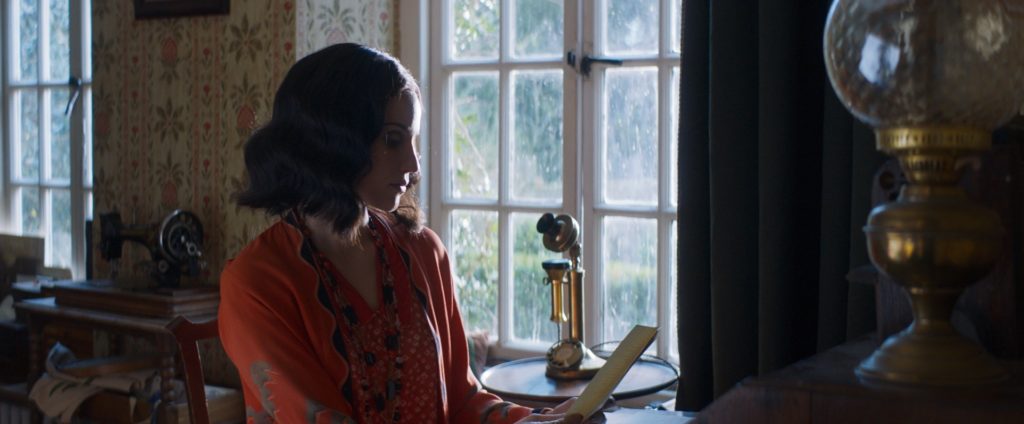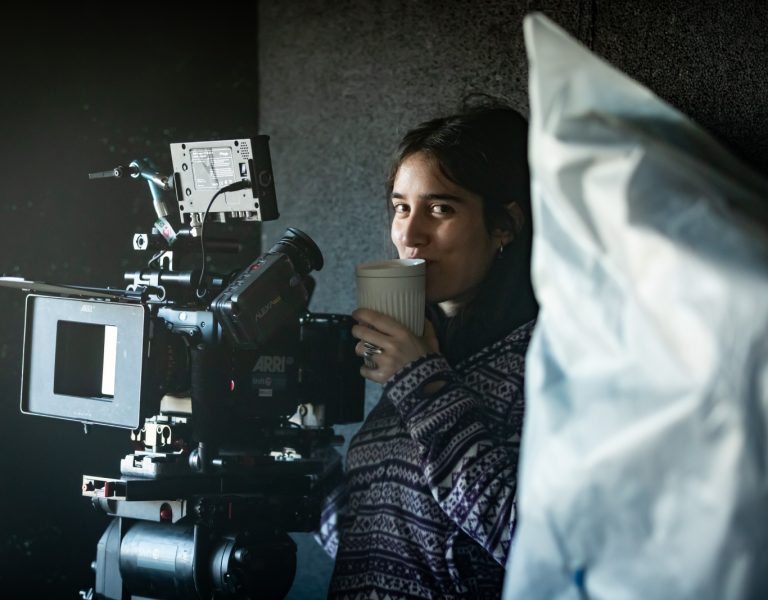WAR OF WORDS
William Nunez’s biopic depicts the life and times of celebrated war poet Robert Graves. The film mostly sits against the backdrop of post World War I and the creative duality of expression and repression that co-existed amidst the writers born out of the bloodshed.
Between claustrophobic British cottages and the debauchery of lavish parties, many varied settings capture the paradoxical nature of post-war Britain in the early 20th Century. This character study intimately follows the tumultuous relationship of Robert Graves (Tom Hughes), Nancy Nicholson (Laura Haddock), and Laura Riding (Diana Agron) with the help of some excellent close quarters camerawork from Adam Barnett.
British Cinematographer caught up with the DP to talk about his work on the film.

What initially appealed to you about the film?
What initially appealed to me was the challenge of taking on a stylish and robust period film which, in the script, reflected a lot of Grave’s poetry.
Who were the other key members of the team you worked closely with?
I worked very closely with my gaffer Ian Stowe, who built a few custom lights for the tight and interesting spaces we found ourselves in. Also, our fantastic production designer Natalie O’Connor and make up artist Fran Hounsom. The DIT Arthur Graham-Maw helped create a series of LUTs we used across the board in the film which helped pull everything together. Our sound mixer Nigel Albermaniche was very generous and taught me a lot.
I’d also say much of what we did wouldn’t have been possible without Christian Parton the producer who moved heaven and earth for the cast and crew – and a mention of the Late Mick Ward, 1st AD, who was truly a saving grace of that film. He took me under his wing and helped me in innumerable ways. He unfortunately passed away earlier this year.

What creative references and inspirations did you consider?
Most of the the references me and the director shared were from paintings and period photography from the era. Notably, some Andrew Wyeth and Hammershøi, but film-wise The Banishment by Andrey Zvyagintsev and Elvira Madigan by Bo Widerberg were incredibly important.
What techniques and camera movements did you perform in order to achieve the visceral, jarring effects of Robert’s PTSD?
We broke away from the more formal track and dolly moves of much of the film and used a much more frenetic handheld style. We used a sharper shutter angle and brought in some lighting effects of shells exploding nearby to bridge the gap between reality and what’s still happening in Robert’s mind.

What was your personal favourite, of the many, beautiful locations to shoot?
The world’s end cottage. It was absolutely tiny, but had huge amounts of character.
How did you manage tricky lighting situations and ensure you caught the settings in a way that was emblematic of the time?
Me and Ian studies a lot of of the lighting of the time and did our best to recreate it. Mostly by either building or adapting existing units.
How did you achieve the otherworldly effects used to mysticise Dianna Agron’s character?
That was definitely helped by Fran Hounsom’s skill and Diana’s talent as an actor. I feel all I had to do was point the camera in the right direction!

How did you approach capturing the close-proximity tension of the early scenes between the three leads?
In a characteristic driven piece like this, I just had to sit back watch and listen and see where the blocking would take us.
What camera package (and lenses) did you use to suit the production?
I used the Alexa Mini – shooting Arri Raw and used the atlas Orion anamorphics and a mix of Hollywood black magics.
What was the biggest challenge the production presented and how did you overcome it?
The biggest hurdle was the schedule. We did it all in 22 days. Against all odds Mick ward got us there.
What lessons did you learn you will take with you onto future productions?
Study, plan, adapt, improvise. Even the best made plans can go south. As much of what we do isn’t in our hands, so always have a plan B, C and D for good measure.















